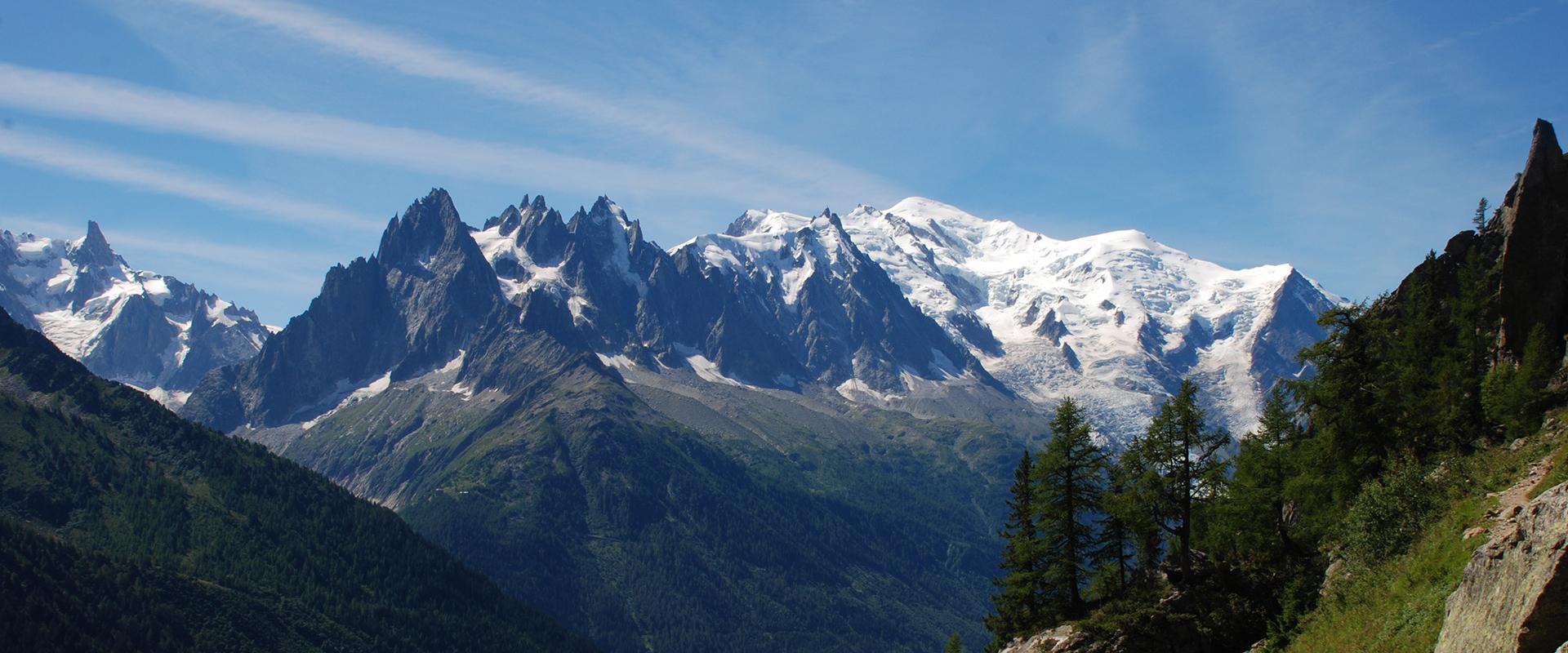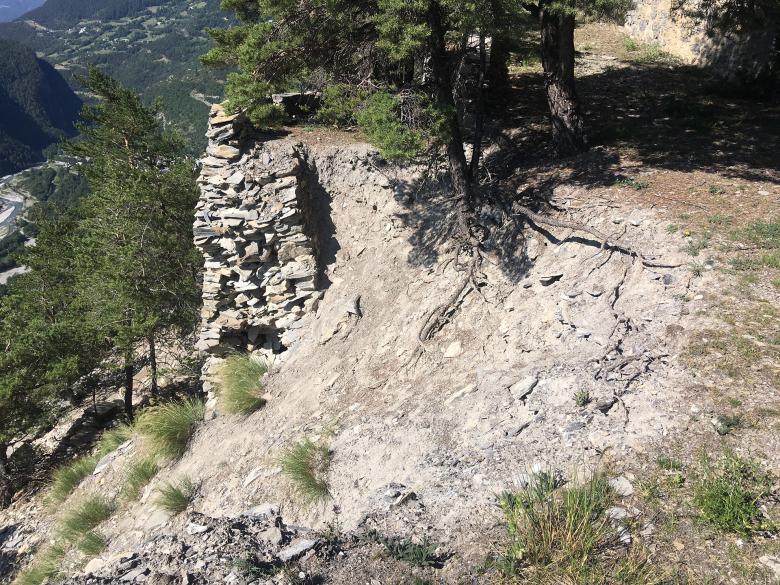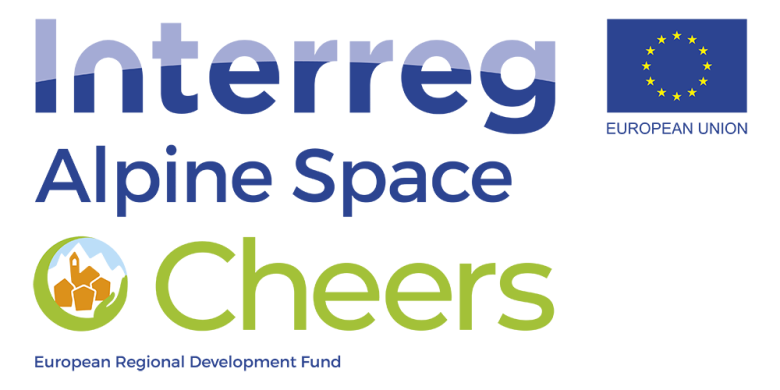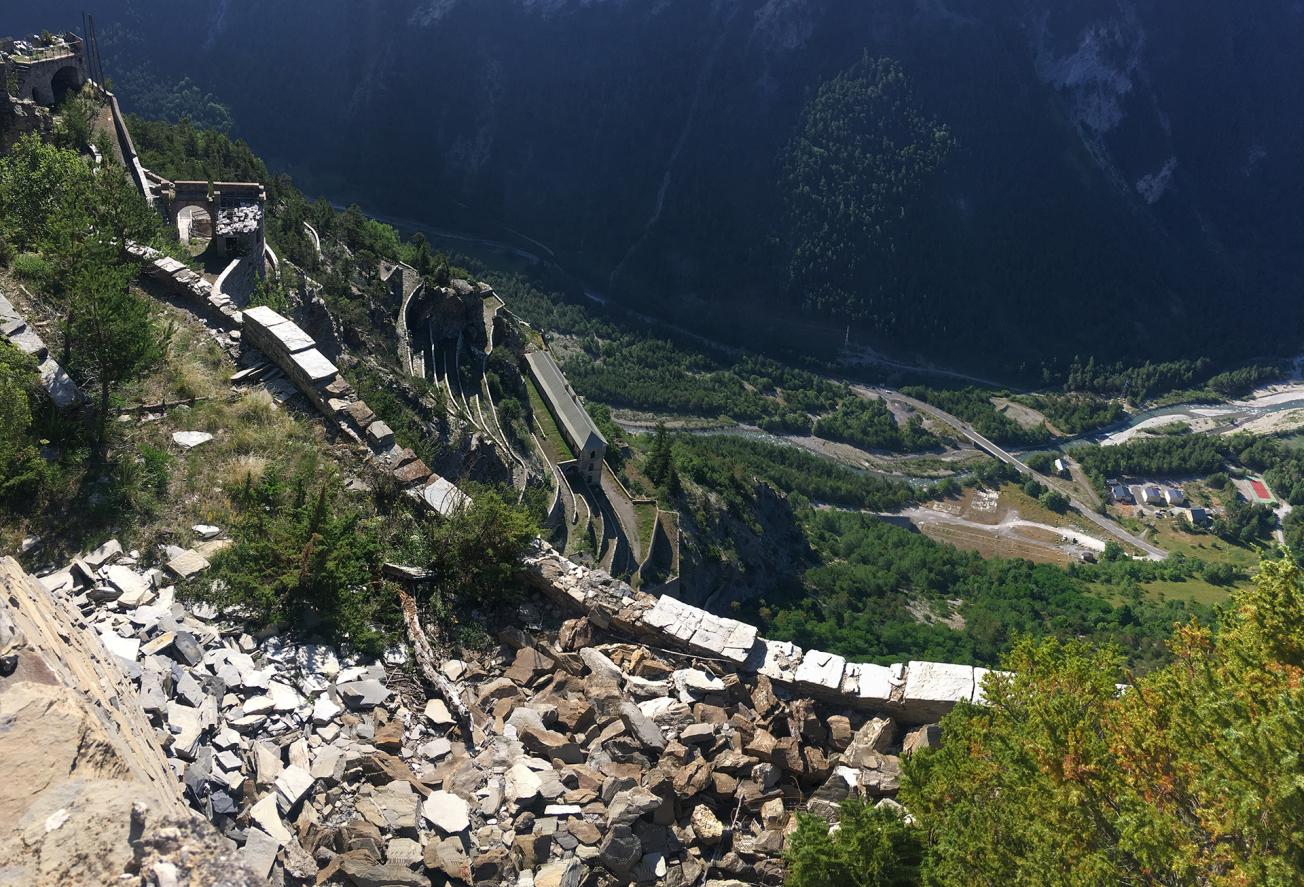
Example of cultural heritage on the French CHEERS pilot site (Ubaye Valley): Fort Tournoux, view of the access ramps between the upper and middle parts.
© BRGM - C. Iasio.
The need
Whether at European level or in the Alps themselves, protecting the cultural heritage against natural hazards is crucial to the resilience of mountain communities when dealing with natural disasters and crises, since the region’s identity and economy are built around it. However, local communities often lack the regulatory frameworks, know-how and appropriate operational resources to secure their cultural heritage. This is particularly true in the Alps. To address this shortcoming, the CHEERS project, led by the Fondazione Lombardia per l'Ambiente (FLA), brought together 12 partners from the Alpine Arc (Italy, Germany, Austria, Slovenia, Switzerland, France), as well as 30 observers, in order to test tools and methodologies on targeted pilot sites in each country, hosting different types of cultural heritage and subject to several natural hazards.
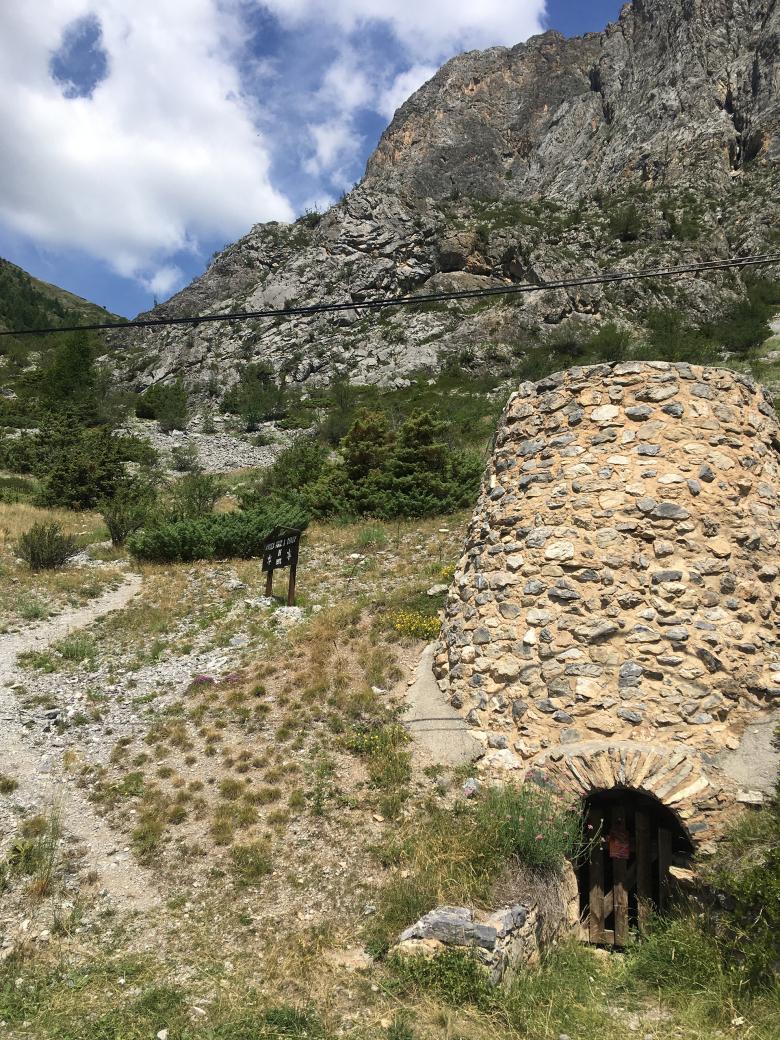
Example of cultural heritage on the French pilot site of the CHEERS project (Ubaye Valley): a lime kiln.
© BRGM - C. Iasio.
Results
The tools proposed as part of the project addressed both the assessment of the value and vulnerability of the Alpine cultural heritage and natural hazards, and the protection of heritage assets. Concerning risk analysis, some examples are “ATTACH” (Slovenia) and “FRATCH” (Austria/Germany) or emergency planning and heritage protection, “FRAGILITY” (France - BRGM) and “360 Virtuel” (France - Entente Valabre). In particular, the project made it possible to design new models of Communal (Municipal) or Intercommunaux (inter-municipal) Plans (PCS) integrating the protection of cultural heritage. In France, coordinated by BRGM, the sites selected are the Ubaye valley and the town of Barcelonnette, both of which are subject to landslide/block fall, earthquake and flood hazards. Various actions were organised for the area:
- A participatory workshop (at Barcelonnette in December 2019, led by BRGM), where risk management and heritage specialists from the pilot site tested the ATTACH tool (prioritisation of heritage issues using a multi-criteria method), with highly positive results.
- A workshop on protecting the heritage of the Ubaye valley in the event of a crisis (at Gardanne in June 2021, led by BRGM - ENTENTE) in order to discuss the various phases of crisis management and to evaluate the tools. This workshop showed that the FRATCH and FRAGILITY tools need to be further developed to be more versatile and operational. The "360 Virtuel" tool, on the other hand, has proved to be very operational and useful to the Civil Protection body, both for prevention and training, and in the event of a crisis.
Other actions were carried out with local stakeholders on targeted sites in the Ubaye valley: a meeting of experts (at Gardanne in September 2020, led by BRGM - ENTENTE), a field campaign to develop a method for assessing the vulnerability of heritage sites to block falls (France - INRAE), and the instrumentation of the Fort Tournoux and Barcelonnette-museum sites to test innovative methods (France - BRGM).
BRGM was more specifically in charge of project activities dedicated to approaches and techniques for protecting heritage assets. It sought to review potential damage to heritage assets, to compile existing documents (guide books and tools) on the protection of heritage assets against natural phenomena, to review current governance in terms of the management of Alpine heritage assets and their protection, and finally to develop and deliver training courses on the inclusion of natural hazards in the management of cultural heritage.
Using the results
The CHEERS project supported transnational alpine and local organisations with responsibility for heritage enhancement, and also contributed to protecting this heritage in the event of crisis or natural disasters, by developing methods and tools, and highlighting the existing gaps in risk management.
The methods and developments carried out as part of CHEERS will be applied operationally, as in the case of the "360 Virtuel" tool. Some will be applied to other projects (ATTACH) or are in the process of being applied (PCS integrating heritage protection), while others need to be further developed (FRATCH, FRAGILITY).
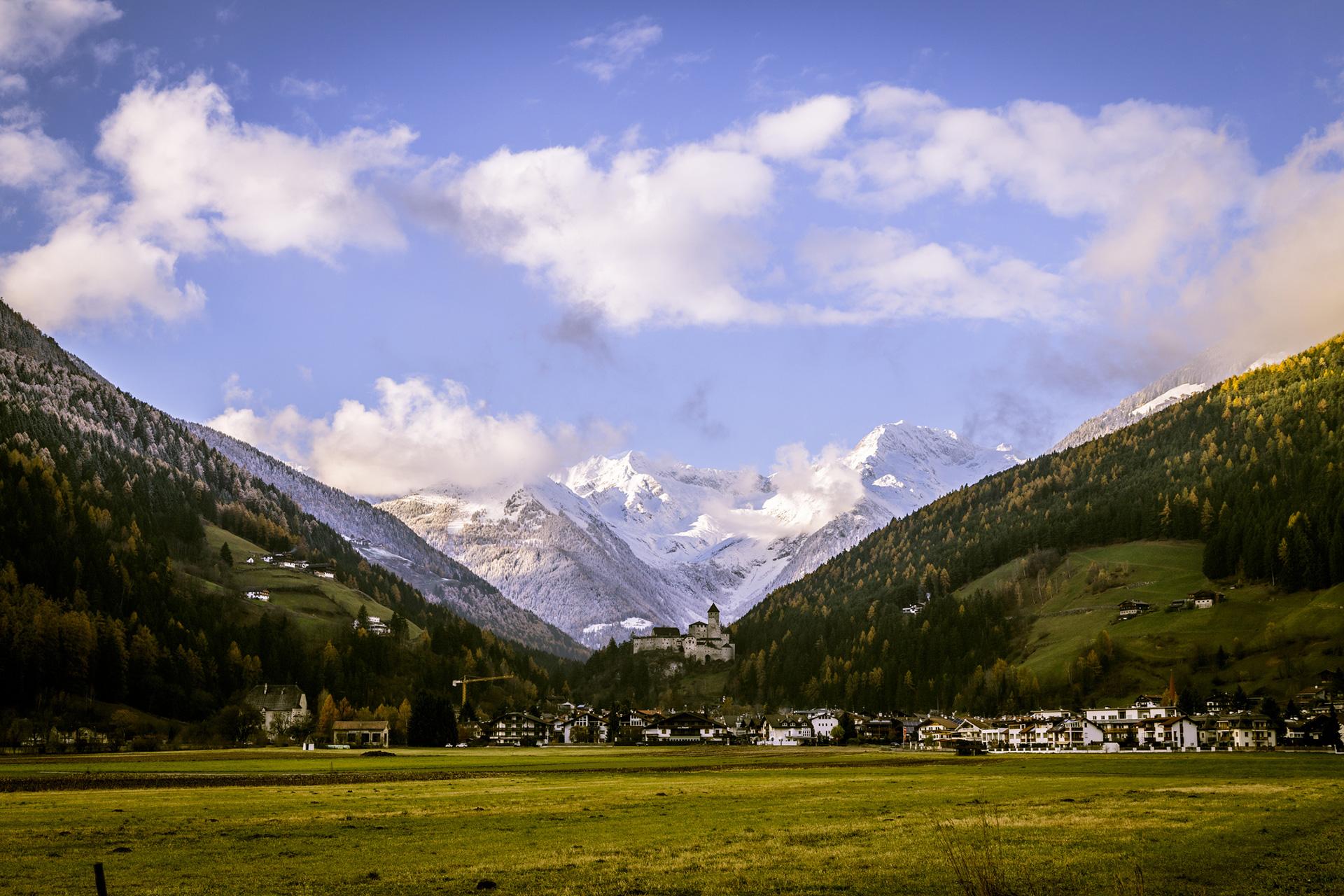
The CHEERS project, like other European projects, has raised the awareness of many stakeholders with respect to heritage protection. Even though actions still need to be followed through, the project has provided answers and suggestions for improvement concerning all the institutional and operational circuits involved in this issue.
Patners
- Italy : FLA - Lombardy Foudation for the Environment (Chef de file), UCSC - Catholic University of the Sacred Heart, TCI - Touring Club of Italy
- France : BRGM, IRSTEA, EPLFM - Valabre Consortium
- Slovenia : SFI - Slovenian Forestry Institute, CUDHg Idrija - Idrija Mercury Heritage Management Centre
- Austria : BFW - Austrian Research Center for Forests, AIT - Austrian Institute of Technology
- Germany : RCC - Rachel Carson Center for Environment and Society
- Switzerland : SUPSI - University of Applied Sciences and Arts of Southern Switzerland
Each partner of the CHEERS project associates observers, actors directly concerned by the results of the project, and who are directly involved in the exchanges in order to adapt the project deliverables to the needs of the actors in the field.
For BRGM, the associated observers are the following:
- DRAC PACA - Provence-Alpes Côte d'Azur Regional Department of Cultural Affairs
- CICRP - Interdisciplinary Center for Heritage Conservation and Restoration
- CFBB - French Blue Shield Committee
- MTES / DGPR - Ministry of Ecological Transition and Solidarity / General Directorate for Risk Prevention

